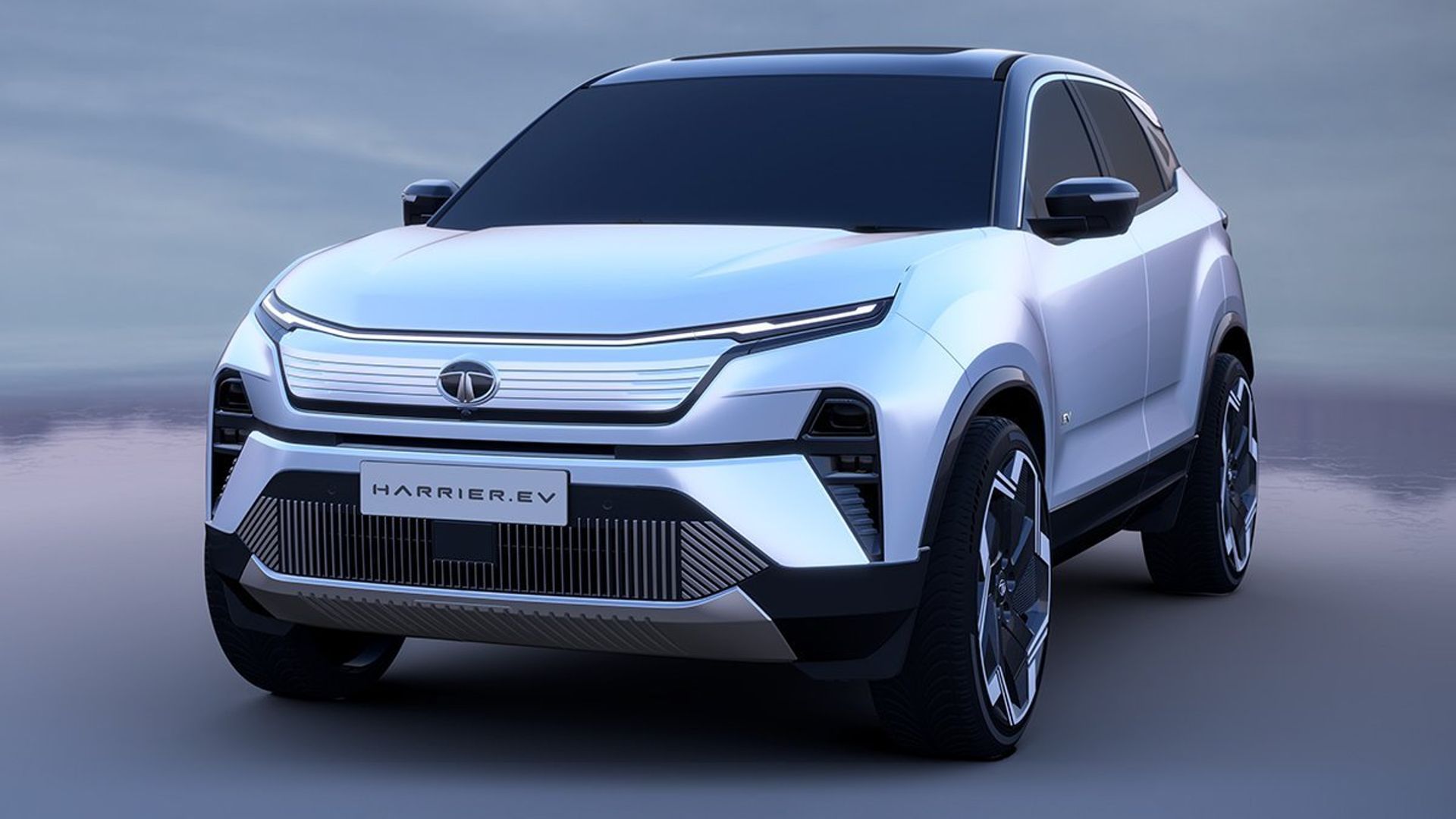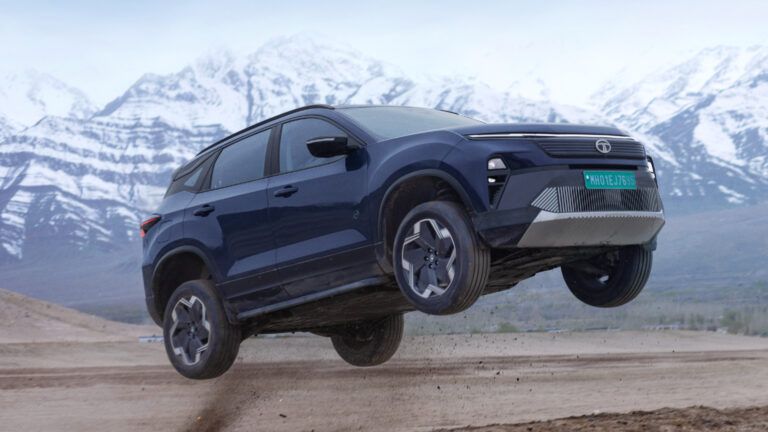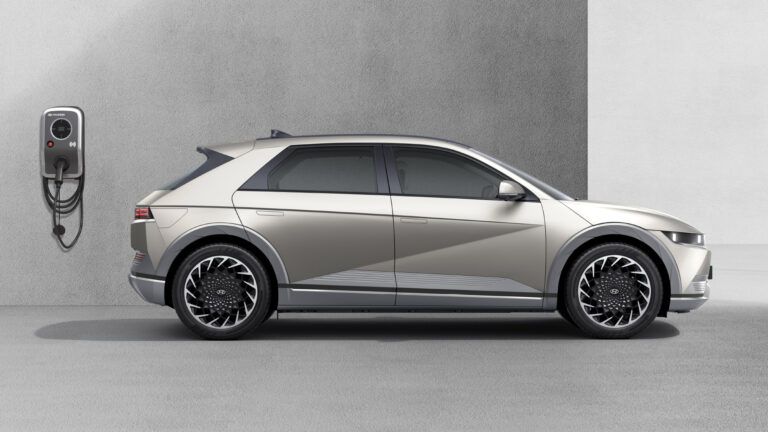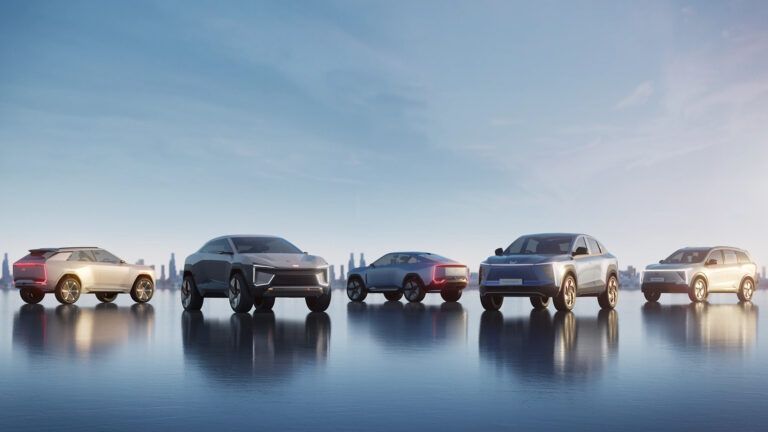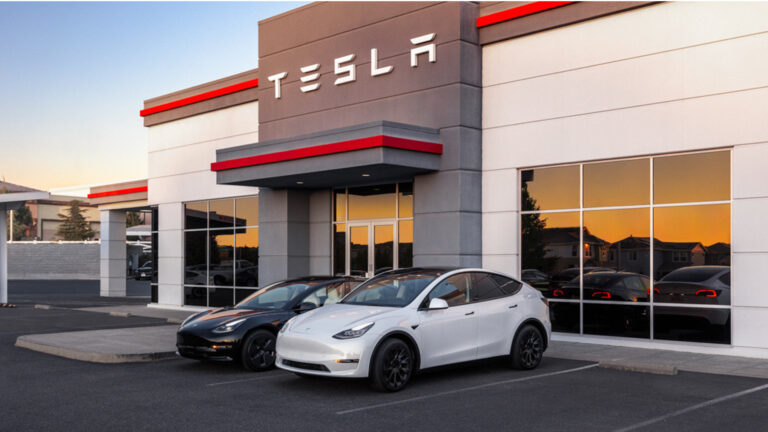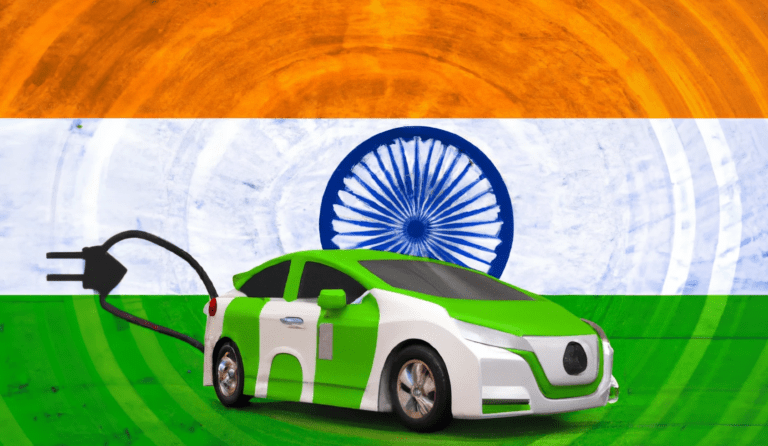Tata Motors plans to release two electric vehicles in the Indian market next fiscal year, as stated in its recent investor day presentation.
The Indian automaker will launch the Curvv EV during the upcoming festive season. Additionally, Tata Motors has confirmed that it will launch its premium electric SUV, the Harrier EV, this fiscal year.
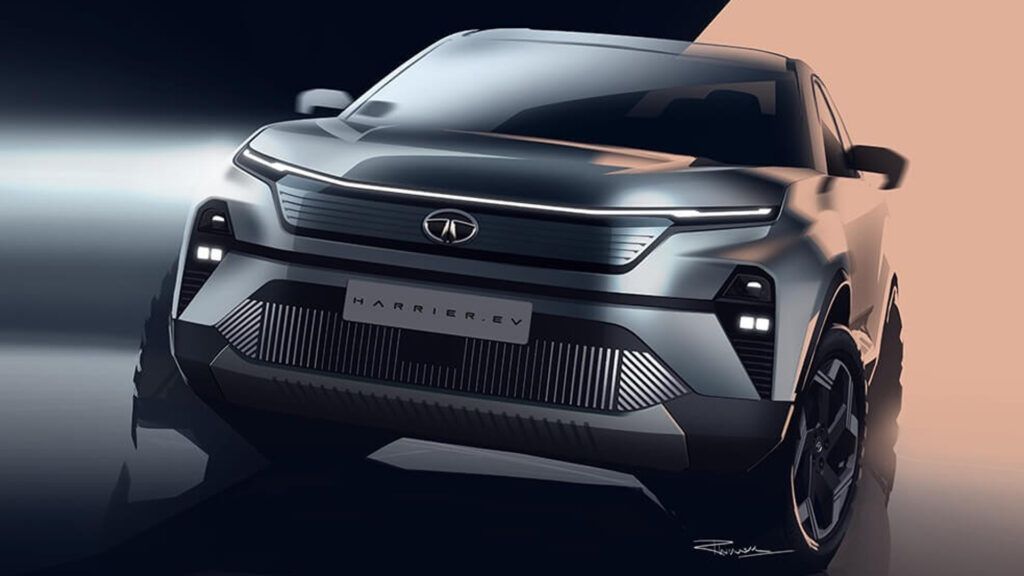
What do we Know About the Harrier EV?
The Harrier EV will use Tata’s acti.ev architecture. That is similar to the upcoming Curvv EV and the already available Punch EV. Although it’s built on the same Land Rover-derived Omega platform as the standard Harrier, the company modified it to accommodate an electric motor.
Inside, the Harrier EV is expected to have a flat floor. Tata has also mentioned that it will have capabilities for vehicle-to-load (V2L) and vehicle-to-vehicle (V2V) charging.
However, the company didn’t reveal anything about the battery size or range on a single charge for the Harrier EV. But it will probably have a 60kWh battery delivering roughly 500km range. Moreover, the e-SUV will have an electric motor on each axle, giving it an all-wheel drive setup.
We know some details about the design of the Harrier EV. The SUV concept revealed at Auto Expo 2023 was almost ready for production. So, you can expect features like the closed-off grille area, new front and rear bumpers, and a coupe-like roofline.
However, there’s not much information about the interior yet. Many components will be similar to those in the Harrier and Safari models. Also, Tata will borrow some features from its existing range of electric vehicles.
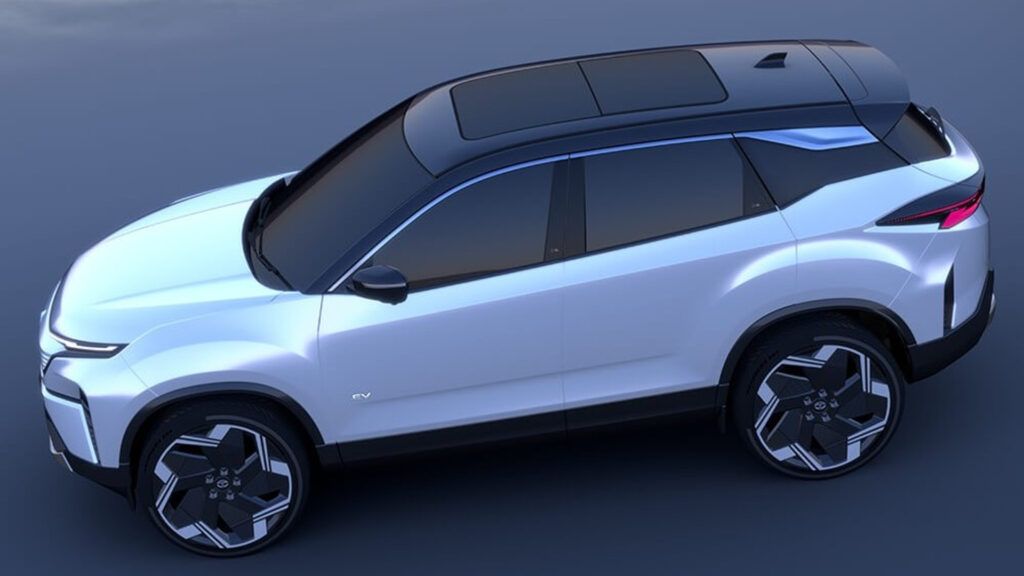
Competition for Harrier EV
When the Harrier EV comes out, it will probably compete directly with Mahindra XUV700-based XUV.e8. The e-SUV from Mahindra might launch before the end of this year. The prices for the Harrier EV and the Mahindra XUV.e8 are likely to begin above Rs 30 lakh, ex-showroom.
Wrapping Up
Apart from the Curvv EV and Harrier EV, Tata Motors is working on multiple EVs for the Indian market.
In FY2026, Tata Motors plans to introduce the Sierra EV and Avinya models. Additionally, the company aims to increase its public charging network from 10,000+ chargers to over 100,000 chargers by FY2030. Also, the community charging network will grow from over 4,300 chargers to 100,000 chargers by FY2030.

